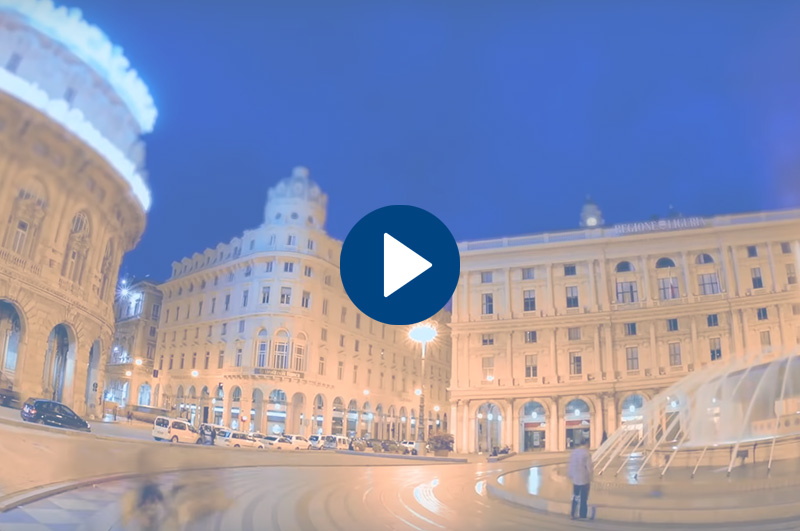ITALY IN 1 WEEK - PRIVATE TOUR
Venice, Florence and Rome
A short tour at the discovery of the most famous cities in Italy, admiring the extraordinary beauty of Italy.
HIGHLIGHTS
- Venice, when wealthy merchants ruled the Mediterranean
- Florence, an open-air museum
- Pisa, how can it stand?
- Siena and San Gimignano, power in the Middle Ages
- Val d'Orcia, where Man and Nature blend with harmony
- Orvieto and Civita, the cities "on the rocks"
- Rome, walking in the shade of history
WHAT'S INCLUDED:
Accommodations in Double Room with Continental Breakfast (*):
- Day 1: 3* to 5* Hotel in Venice city centre
- Days 2 & 3: 3* to 5* Hotel in Florence city centre
- Day 4 & 5: 4* to 5* Country House in Val d’Orcia
- Day 6 & 7: 3* to 5* Hotel in Rome city centre
(*) The Hotel list is available upon request
Transfers (**):
- Day 2: Transfer by private water cab to Venice Pier + Transfer to your accommodation in Florence
- Day 4: Drop off at your accommodation in Val d’Orcia area
- Day 6: Transfer to your accommodation in Rome
(**)All transfers by private car (2 pax)/ minivan (3 to 6 pax)/ minibus (7 to 10 pax)
Private Guided Visits / Tours (***) / Activities:
- Day 1: 3-hour private walking tour of Venice city centre with an Authorised Tourist Guide – Half-hour gondola ride
- Day 2: 3-hour private walking tour of Florence city centre with an Authorised Tourist Guide – 2-hour Tuscan Cooking Class in Florence
- Day 3: Half-day excursion to Pisa
- Day 4: Full-day excursion to Siena and San Gimignano
- Day 5: Full-day excursion to Val d’Orcia area - 3-hour private walking tour of Montepulciano city centre with a Sommelier Guide, with tastings of Vino Nobile, Pecorino cheese and truffle- Visit of a Supertuscan Brunello di Montalcino wine cellar with tastings
- Day 6: 3-hour private walking tour of the Colosseum and Imperial Fora Archeological area with an Authorised Tourist Guide
- Day 7: 3-hour private walking tour of Vatican City with an Authorised Tourist Guide - 3-hour Food Tour in Rome city centre
(***)All tours by private car (2 pax)/ minivan (3 to 6 pax)/ minibus (7 to 10 pax)
Admission Tickets:
- Saint Mark’s Basilica and Palazzo Ducale in Venice
- Galleria dell’Accademia in Florence
- Leaning Tower in Pisa
- Duomo Cathedral in Siena
- Colosseum and Imperial Fora Archeological Area in Rome
- Vatican Museums with the Sistine Chapel in Rome
Full emergency assistance 24 hours/day by our Back Office
List of recommended restaurants and deli shops along the itinerary
All taxes
Options:
- Pick up at Venice Airport /Railway Station at the start of the tour
- Accommodation in Venice the night before the start of the tour
- Drop off at Rome Airport /Railway Station at the end of the tour
- Other options upon request
Day 1 - VENICE
Benvenuti in Italia, welcome to Italy.
Here you are in the “unique” Venice, the “city on the lagoon”, you will be astonished by its beauty and charm! You may start your visit with Piazza San Marco (St. Mark’s Square) and the interior of the Basilica, a 900 years old marvel of architecture! The church is unique in Italy for its golden Byzantine and Medieval mosaics, its intricate stone and marble traceries and exuberant Middle Eastern domes. Near St. Mark’s Basilica is Palazzo Ducale, the most impressive secular building in Venice and once the official residence of the supreme authority of Venice, the “Doge”. A masterpiece of Gothic architecture, the Doge’s Palace is an impressive structure composed of layers of building elements and ornamentation, from its 14th and 15th-century original foundations to the significant Renaissance and opulent Mannerist adjunctions.
At lunch, you may relax by tasting wine and savouring delicious "cicheti" (finger food). There is tremendous variety, and options include anything from simple cheese or salami to almost any kind of seafood, fried and grilled vegetables, sweet and sour sardines, creamy codfish and much, much more!
Then you may visit Santa Maria Gloriosa dei Frari (Saint Mary’s of Friars), striking for its huge size and for the quality of its works of art, including masterpieces by Titian, Giovanni Bellini and Donatello, and several grandiose tombs. Also, explore the streets and savour everyday life in an intricate maze of ancient narrow alleyways, lively squares with magnificent buildings and meandering canals, and finally walk on the Rialto Bridge, the busy "heart" of Venice. And last but not least, enjoy a Gondola ride on the city’s canals: a jump back in time, when Venetians moved only on the water.
Knowing what should be bought in Venice is not easy, as it is one of the most beautiful Italian cities. Rich in traditions, Venice presents a wide selection of souvenirs to take home as a souvenir of your trip. What you cannot miss among your purchases are the typical Venetian masks. The cost of the original ones is quite high, but it is really worth it! Another thing that should be bought in Venice is craftsmanship, appreciated worldwide. In the city of Italian carnival, it is a must to buy a Murano glass object. Each product is worked and painted by hand, but be sure you buy an original product from Murano, guaranteed by a label or a signature (and also by the seller), and not a Chinese copy!
Finally, at dinner you will be delighted by the flavours of the regional cuisine of Veneto, boasting delicious recipes such as "Sarde in saor”, Risotto with seafood, the typical “Baccala' mantecato”, to finish with a fantastic “Bussolà” (for an overview of the regional cuisine of Veneto see our BLOG).

Day 2 – FLORENCE
IWelcome to Florence, the land of Dante, Leonardo da Vinci and Giotto!
Despite its international fame and greatness, Florence is also a small city, whose history is interwoven with that of its passionate citizens for more than one thousand years.
In Piazza Duomo you will be astonished by the Duomo, with the incredible Brunelleschi’s cupola, a masterpiece of art and architecture whose building techniques building are still covered with a veil of mystery. Beside it, Giotto’s Campanile (Belltower) and the Baptistery, one of the oldest buildings in the city, with its famous bronze doors made by Pisano and Ghiberti in the 14th and 15th centuries. In Piazza della Signoria you will walk in the middle of bronze and marble masterpieces by Giambologna and Cellini inside the marvellous Loggia dei Lanzi, and will admire the imposing Palazzo Vecchio, one of the symbols of Florence and still the seat of government of the city. You may also spare some time to relax, visiting a typical market for shopping, strolling through the pedestrian streets of the city and crossing the oldest bridge in Florence, “Ponte Vecchio” (Old Bridge), rich of jewellery shops.
Our itinery include the visit to the Uffizi Gallery, one of the most famous museums in the world for its extraordinary collections of paintings. Here you will admire works by Botticelli, Michelangelo, Leonardo da Vinci, Caravaggio and a lot more. Also, you should not miss Galleria dell’Accademia, hosting Michelangelo's David, the most famous sculpture in the world!
At lunch, enjoy “Panino con Lampredotto” in a typical Florentine market, while for dinner move to Oltrarno where Florentines like to dine. Here you may taste the simple yet unforgettable recipes of the Tuscan tradition, such as "Crostini", "Panzanella" and "Peposo". And remember, Florence is the home of "Fiorentina" steak! In case you are a vegetarian, don’t worry: Tuscan cuisine offers tasty alternatives like “Pappa al Pomodoro” or “Ribollita” (for an overview of Tuscan cuisine see our BLOG).

Day 3 – PISA
Pisa is famous worldwide for its “Torre Pendente” (Leaning Tower), but its wonderful square, Piazza dei Miracoli, set over an ample greenfield, hosts three other whiter-than-white masterpieces of exquisite Medieval art: the Cathedral, the Baptristy and the “Camposanto” (Graveyard). They are so unique that their creation originated a new style, "Pisan Romanesque".
This area was chosen to construct the Duomo of Santa Maria Assunta strictly for its centrality; founded in 1064, it was intended to celebrate the grandeur of Pisa during the Marine Republic’s epoch of power. "The temple of marble white as the snow"; that’s how the structure is described on the gravestone of its architect, Buscheto di Giovanni Giudice. Consisting of five naves with its transept divided into three naves, it is surmounted by a splendid dome encircled by a loggia. The Duomo’s façade and exterior lateral sections feature elaborate decoration in marble (which can also be seen on its interior), mosaics, and bronze.
In front of the Cathedral stands the Baptistry, also in a particular version of the Romanesque style. Initiated in 1152 by Diotisalvi, the Baptistry was finally completed in the 14th century; Gothic elements were added then. Of cylindrical form and circled by arcades of columns, this structure in white marble even boasts impressive acoustics.
The Camposanto closes the northern end of the complex's piazza. This monumental cemetery, begun in 1278, is bordered by a marble fence and houses a cloister at its centre. Unfortunately, most frescoes that once coloured its walls were destroyed in a fire in 1944 during the battle for Pisa.
Ultimately, the true symbol of Pisa is the Campanile, the Leaning Tower, which completes the image of this city. Because of land sinkage beneath it, the Tower stands at a significant incline. Its construction started in 1173, but the Tower was not completed until the second half of the 1300s. In cylindrical form, the blind arcades of its lower part mutate into six floors of loggias, repeating motifs from the Duomo. Inside, a spiral staircase of 294 steps leads to the heights of one of the most famous towers in the world, where the lovely belfry and a spectacular view of the surrounding landscape await.
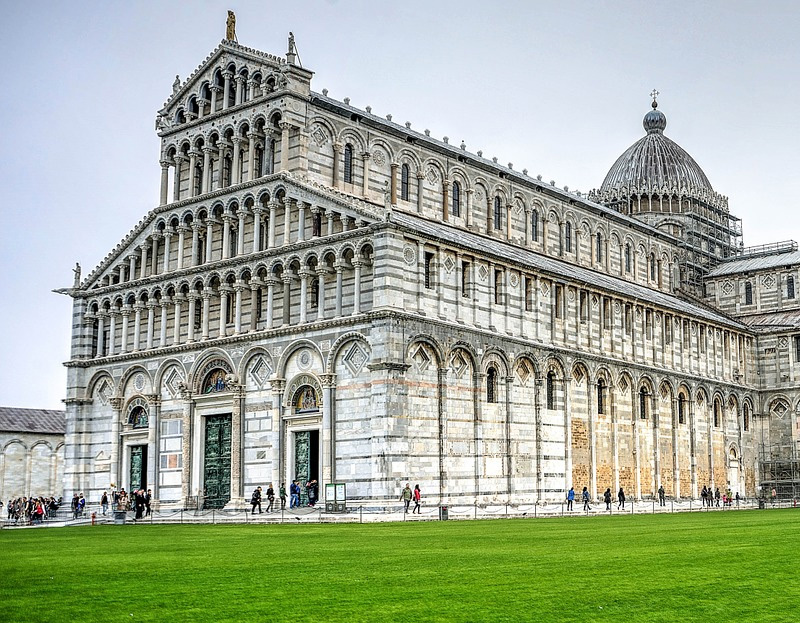
Day 4 – SIENA AND SAN GIMIGNANO
In Siena, the city of the Palio, you will walk on the famous Piazza del Campo, the concave square where horses run twice a year in a dangerous race that symbolizes the city’s freedom. On the days of the Palio, the whole town goes crazy; read about it in our BLOG. Indeed, you will not forget the colour of frontages and roofs, the renowned colour “Sienna”, a pigment first produced during the Renaissance, that makes the city lovely and warm. And don’t forget to taste the Senese sweets: “cantucci” (biscuits with toasted almonds), “ricciarelli” (soft biscuits with icing sugar), “panforte”(cake with fruit nuts and spices) and “cavallucci” (biscuits with honey, walnut, candied fruits and spices. Travellers who love dessert will be delighted!
In the afternoon, you will stroll with your head upwards along the streets of one of the most beautiful cities in Tuscany, San Gimignano, also known as the "Medieval Manhattan", thanks to its old and impressive 14 towers that dominate the town skyline. Originally the towers were 72, built by patrician families probably to demonstrate their wealth and power. Seven of San Gimignano's towers are around Piazza del Duomo; the tallest one is Torre Grossa, 54 meters high, dating back to 1298.
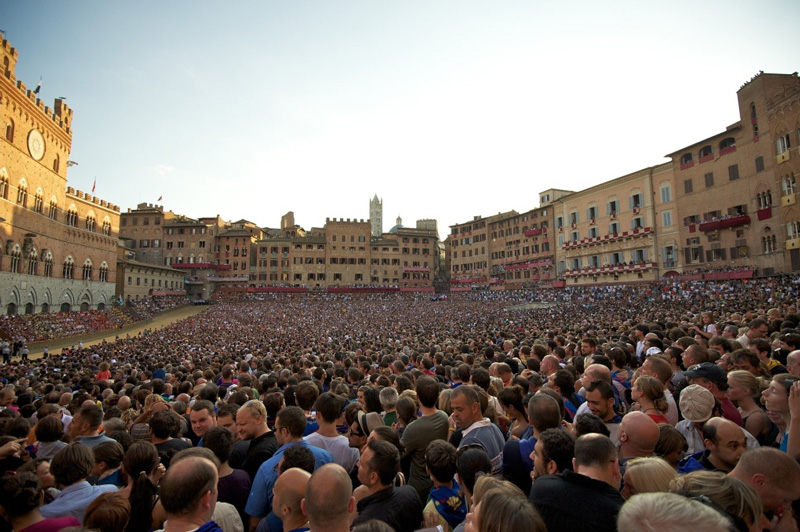
Day 5 – VAL D’ORCIA
Val d’Orcia is one of the most fascinating places in Italy, included by UNESCO in the list of World Heritage Sites. Its landscape is a part of the agricultural hinterland of Siena, redrawn and developed when it was integrated into the city-state's territory in the 14th and 15th centuries to reflect an idealized model of good governance and create an aesthetically pleasing picture. The landscape’s distinctive aesthetics, flat chalk plains with almost conical hills and fortified settlements on top, inspired many artists. Their images have come to exemplify the beauty of well-managed Renaissance agricultural landscapes.
Your first stop will be in Pienza, “Pio’s town”: here, Pope Pius II decided to build the perfect palazzo for his papal court according to the project of an “Ideal City" drawn up by artists such as Piero della Francesca. From the loggia of the Palace, you will enjoy a breath-taking panorama of the valley. Pienza is also the area of the typical “Pecorino di fossa” cheese, an absolute delight to the palate!
In Montepulciano, our friend Francesca will lead you to discover this beautiful town full of stories, legends and thousand flavours, introducing you to the excellent products of this unique land: olive oil, pecorino cheese and Vino Nobile di Montepulciano.
Then, you will get to Montalcino, one of the prettiest hill towns in Tuscany. Around the village, rows of olive trees, precious grapevines and yellow fields create an enchanting landscape. Here you may visit a Brunello winery to taste the most famous SupertuscanSupertuscan wine, probably the best Italian red!
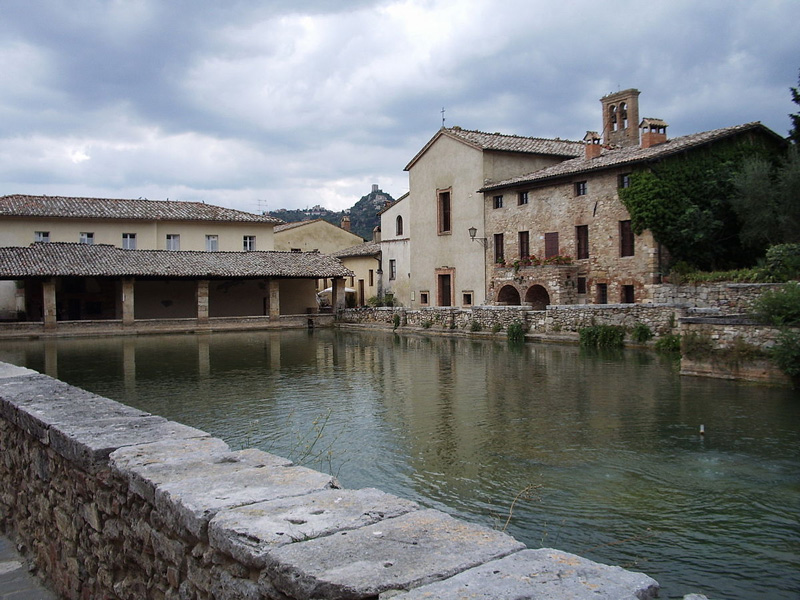
Day 6 – ROME
Here you are in Rome, where ancient history, excellent art and religious icons mix uniquely! Start from the 2,000-year-old Colosseum, the most famous amphitheatre in the world, and the Imperial Fora, the administrative and monumental centre of the Roman Empire. On the Palatine Hill, the majestic ruins of the Palaces of Augusto, Tiberius and Domiziano still dominate theCircus Maximus valley, 50-meter-high structures giving a unique view of the city.
Close to the Colosseum, inside the Church of San Pietro in Vincoli, you may see the famous Michelangelo sculpture of “Moses”. Supposedly, Michelangelo, admiring his Moses, enraptured by the so realistic shapes of the imposing statue, was struck by a violent outburst of anger and exclaimed the famous phrase “Perchè non parli?" (Why don't you speak!?)
From Piazza Venezia, you will head inside “Baroque” Rome, starting with the Pantheon, dedicated to worshipping every god (Pan-every Theon-divinity), now the memorial chapel of great Italian people of the past. After that, don’t miss the Church of St. Louis of the French, famous for the cycle of paintings of the great Caravaggio at the end of the 16th century. Then Piazza Navona, the splendid oval area corresponding to the underground Domitianus’ Stadium, with the gorgeous Fountain of the Four Rivers by Lorenzo Bernini in the centre of the Piazza. And finally, Fontana di Trevi, the city’s biggest and most famous fountain, a Rome icon renowned worldwide: here, statues of travertine marble stand over the cliff and the broad basin in an epic representation of the Kingdom of the Oceans.
At the end of the day, sit down at a local "trattoria" or "fiaschetteria", the typical home-style restaurant, to taste authentic Roman cuisine in a popular and cheerful atmosphere (for an overview of Roman cuisine, see our BLOG).
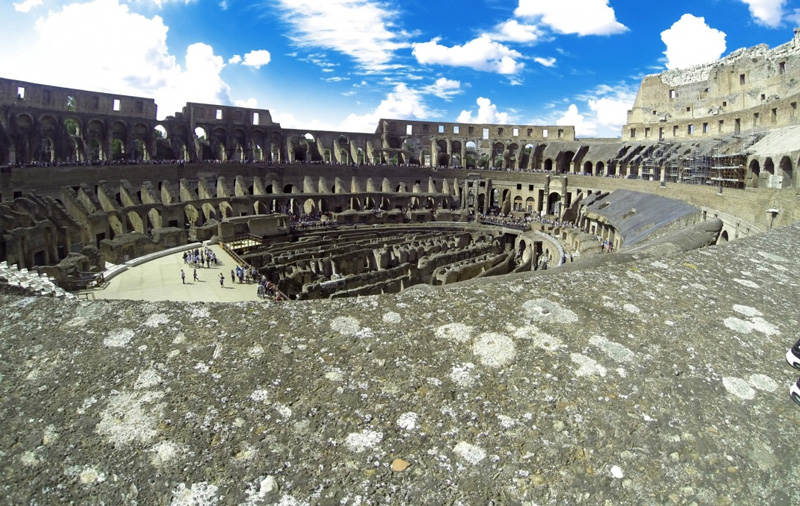
Day 7 – VATICAN CITY
On the other side of River Tevere, Vatican Hill is the home of the tiny state of Vatican City. The immense St. Peter’s Basilica dominates the extraordinary Piazza framed by the magnificent four-column-deep colonnades designed by Gian Lorenzo Bernini. The Basilica is an extraordinary casket for some of the world's most beautiful works of art, such as Michelangelo’s “La Pietà” and Bernini’s “Baldacchino”, along with works of the most important artists of the Renaissance, from Raphael to Canova.
Inside the Vatican Museums, you will be astonished by the exquisite and unique Sistine Chapel, the “Sancta Sanctorum” (“Holy among the Holiest” in Latin) of the Roman Catholic Church, where cardinals gather to elect the new Pope! The Sistine Chapel takes its name from Pope Sixtus IV della Rovere (pontiff from 1471 to 1484), who had the old Cappella Magna restored between 1477 and 1480. The decoration of the walls was executed by a team of painters, Pietro Perugino, Sandro Botticelli, Domenico Ghirlandaio and Cosimo Rosselli, assisted by their respective shops.
Julius II della Rovere (pontiff from 1503 to 1513), the nephew of Sixtus IV, decided to partly alter the decoration, entrusting the work in 1508 to Michelangelo Buonarroti, who painted the Ceiling and, on the upper part of the walls, the lunettes. The nine central panels show the Stories of Genesis, from the Creation to the Fall of Man, to the Flood and the subsequent rebirth of humanity with the family of Noah. Again, towards the end of 1533, Clement VII de' Medici (pontiff from 1523 to 1534) asked Michelangelo to paint the Last Judgement on the altar wall. How could he refuse? And, in fact, he did not, but painted his vision of the Judgement, with a powerful and furious Jesus Christ.
The tour is over, but the memories of a fantastic journey will accompany you for a lifetime!
Arrivederci for another tour with VITOR, Visit Italy on the Road.
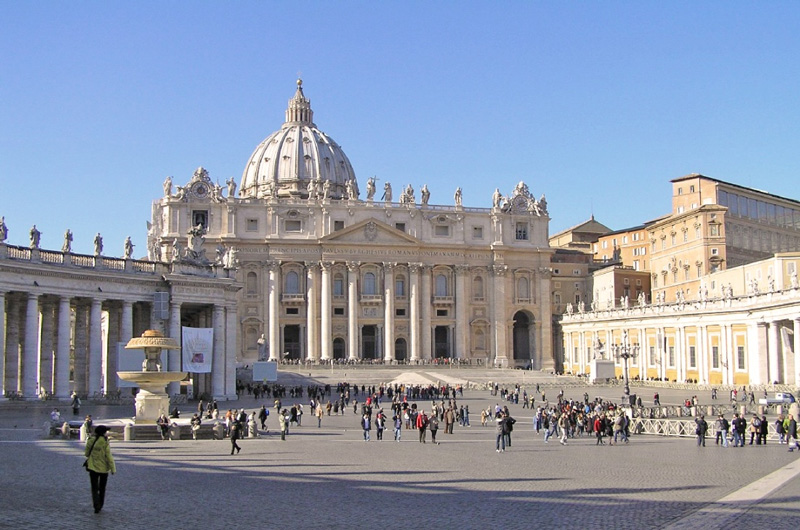
Città del Vaticano: Basilica di S. Pietro
